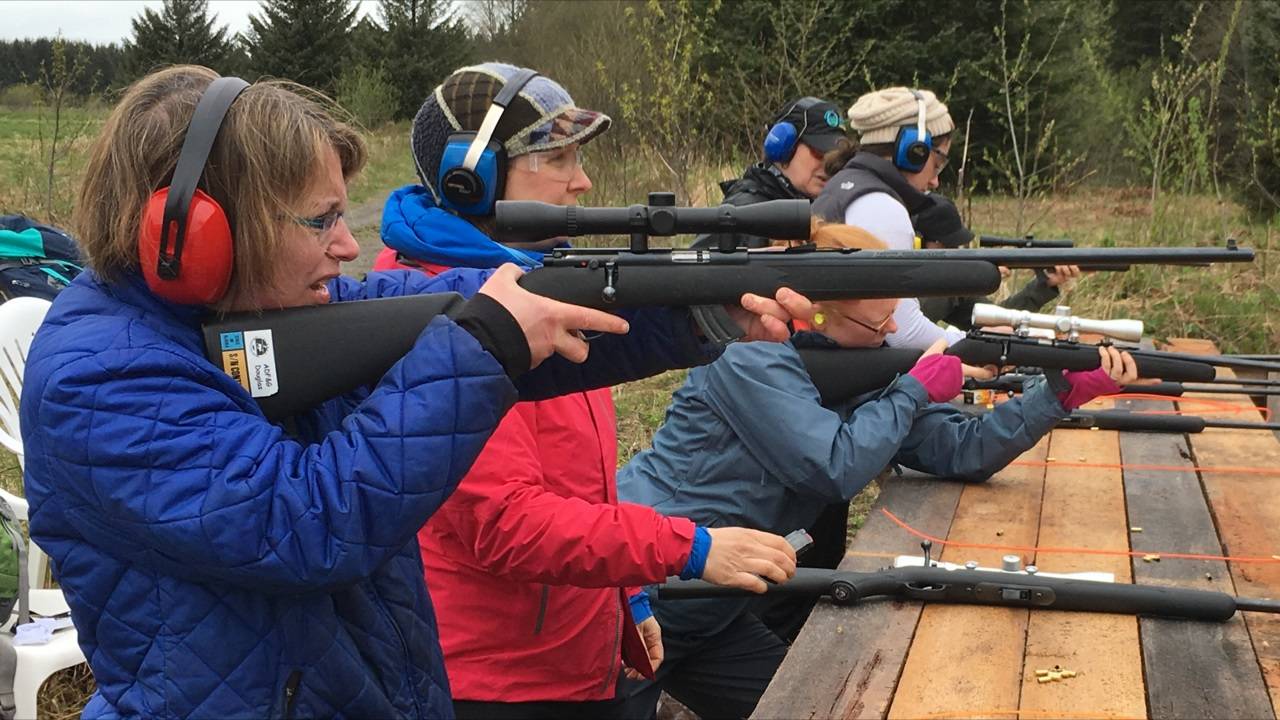Becoming an Outdoors Woman (BOW) celebrated 10 years in Southeast this year. The first event was up in Haines, followed by nine years at Echo Ranch. In the final evaluation sheet, one of the questions asked how I heard about BOW. I fumbled around for something to say, when I simply commented that it was infamous.
No one makes disparaging remarks about BOW. At mealtimes, the talk is full of pride with women showing a photograph of themselves skinning a deer or contemplating the idea of participating in a shooting competition. Most of the time, the focus is on other women’s accomplishments, like celebrating someone who took a chainsaw class and skinned off a quarter inch round of wood, hauled up a crab pot, or found their way by using a map and compass for the first time.
The class options are diverse, and looking them over, I knew it must have been hard for participants to only choose four. My role during the weekend was to hike and explore the wild edibles around camp with others.
As the class worked their way from the beach to the river, we found the early stages of strawberries and nagoonberries. There was also cinquefoil or silverweed. This is a plant that can be dug up and the root roasted to produce something that tastes a bit like sweet potato. Small plantain also dotted the hillside, appearing next to fern-like yarrow.
In the sandy areas, we found succulents. This time of year, before it flowers, beach greens are sweet with no aftertaste. The oysterleaf isn’t as delicious, but stands out with its blue-tinged sage color.
Following the river, we found lovage. This time of year, it has a distinctive purple color on its stem. Its three-leafed bracket has a smell that distinguishes it from angelica or water hemlock. Another carrot relative, cow parsnip emerged fuzzy with new growth. Although some people steam and eat it, I haven’t had courage. Like lovage, it has a distinctive smell. For me, the smell of this pushke plant, lovage, and nettles represent the best of spring.
Into the forest undercanopy, we found twisted stalk. Emerging out of the woods, we found a nice little dip that was carpeted in violets with some fiddleheads poking out of last year’s bracken growth. Near the corral with the two-week old filly, we located sourdock.
Crossing over the bridge and under the castle used for summer camps, we entered shady woods that contained blueberries. There is a short time span when emerging leaves have a slight flavor of the blueberries. More fiddleheads followed before we got to an area of Devil’s Club shoots, currants, and salmonberry.
Over the course of the weekend, I watched spring emerge. Spruce tips unfurled from their brown tips, plants grew bigger, and the fiddleheads popped out of their protected covering.
I encourage everyone to find a trail to walk on a regular basis. It doesn’t have to be long but one that goes through different habitats, preferably containing bits of shoreline, woods, and boggy areas. Walking though the seasons allows you to see the plants in its various stages. What is easily identifiable in the spring, can look completely different in a month. Not only are we better able to harvest safely, but we develop a connection to the land.
If you get the chance, consider attending next year’s BOW, a Beyond Bow class, or Alaskans Afield, which offers skill opportunities for both women and men. Having a teacher, one who is passionate about their skills, is a wonderful opportunity to grow as a learner. I am grateful to have these opportunities in Southeast Alaska.
Corinne Conlon writes this column, called “Gathering Alaska,” for the Capital City Weekly.

